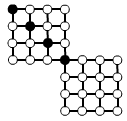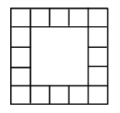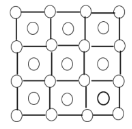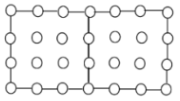Or search by topic
Number and algebra
Geometry and measure
Probability and statistics
Working mathematically
Advanced mathematics
For younger learners
Seven Squares - Group-worthy Task



Three students were asked to draw this matchstick pattern:

This is how Phoebe drew it:
Can you describe what Phoebe did?
How many 'downs' and how many inverted C's are there?
How many matchsticks altogether?
Now picture what Phoebe would do if there had been $25$ squares.
How many 'downs' and how many inverted C's would there be?
How many matchsticks altogether?
If there had been $100$ squares? How many matchsticks altogether?
A million and one squares? How many matchsticks?
This is how Alice drew it:
Can you describe what Alice did?
How many 'alongs' and how many 'downs' are there?
How many matchsticks altogether?
Now picture what Alice would do if there had been $25$ squares.
How many 'alongs' and how many 'downs' would there be?
How many matchsticks altogether?
If there had been $100$ squares? How many matchsticks altogether?
A million and one squares? How many matchsticks?
This is how Luke drew it:
Can you describe what Luke did?
How many squares and how many inverted C's are there?
How many matchsticks altogether?
Now picture what Luke would do if there had been $25$ squares.
How many squares and how many inverted C's would there be?
How many matchsticks altogether?
If there had been $100$ squares? How many matchsticks altogether?
A million and one squares? How many matchsticks?
Now choose a couple of the sequences below.
Try to picture how to make the next, and the next, and the next...
Use this to help you find the number of squares, or lines, or perimeter, or dots needed for the $25^{th}$, $100^{th}$ and $n^{th}$ pattern.
Can you describe your reasoning?
Growing rectangles

- height 2 and width 25
- height 2 and width 100
- height 2 and width n
L shapes

- height 25 and width 25
- height 100 and width 100
- height n and width n
Two squares

- 25 black dots
- 100 black dots
- n black dots
Square of Squares

- side length 25
- side length 100
- side length n
Dots and More Dots

- side length 25
- side length 100
- side length n
Rectangle of Dots

- side length 25
- side length 100
- side length n

